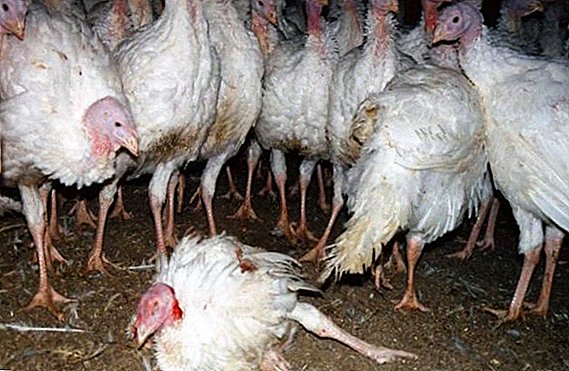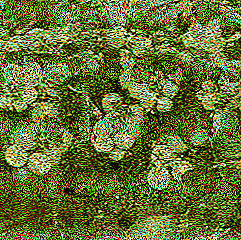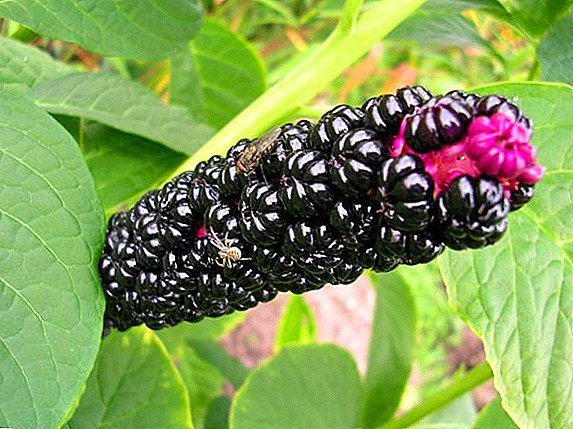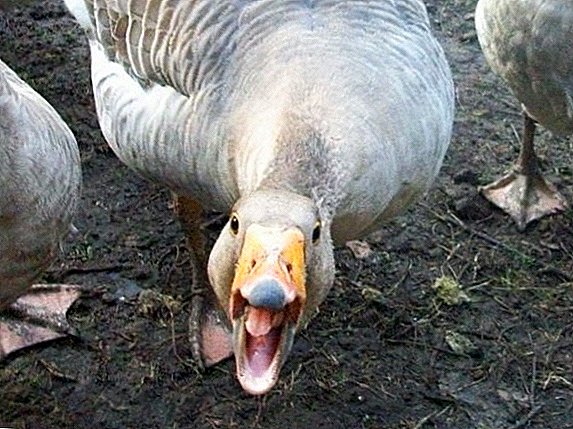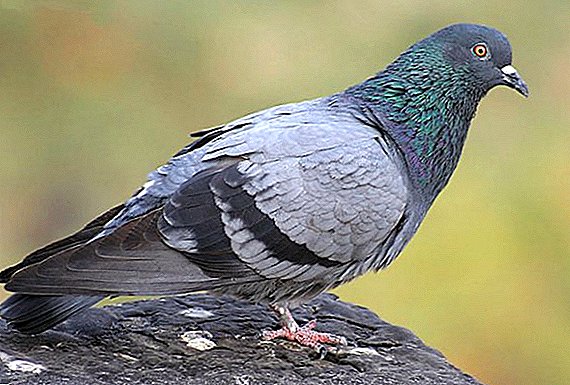 One of the most common bird species in the urban jungle is the pigeon. In the world there are more than 800 different breeds of these birds, but in our latitudes most dove pigeons are found.
One of the most common bird species in the urban jungle is the pigeon. In the world there are more than 800 different breeds of these birds, but in our latitudes most dove pigeons are found.
They love to walk around the city squares, parks and squares, as if showing that this is their city, and they are the main local attraction.
In this article we will speak about Sizom or, as it is often called, the city pigeon, its lifestyle, natural enemies and how pairs of these unusual birds are formed.
Description and external structure
The blue dove has been known to mankind since ancient times. The first mention of them was found in Mesopotamia, and it is more than 5000 years old. During this period, the domestication of these birds occurred. In ancient Egyptian graves were found the remains of birds.
This once again confirms the historical fact that since ancient times the pigeon has been considered a sacred bird. Ornithologists distinguish two subspecies of these birds: wild and urban.
Check out the top ten most unusual breeds of pigeons.
However, regardless of habitat, they have the same physique:
- color - Blue-gray coloring is most common in this species. However, the urban representatives, there are about 28 varieties of color. This diversity is due to the fact that in urban latitudes artificial selection occurs. The plumage of the head, neck and chest has a yellow, purple metallic or greenish-purple hue. Some varieties may have white or dark spots. Depending on the coloring of the plumage, the width and color of the stripes on the wings and lower back, ornithologists distinguish more than 10 species of the blue-gray pigeon;

- weight - in representatives of wild fauna, body weight varies from 230 to 400 g. However, the weight of urban birds can sometimes exceed the indicated values. This is because birds are susceptible to obesity;
- torso - large, and its length can reach 37 cm. For the smallest birds, it does not exceed 29 cm. The blue dove gives the impression of a slender bird, but it has subcutaneous fat, the volume of which is more than half of its body, and weighs only 0, 1% of total body weight;
- wings - have a pointed shape, and their scope can reach 67-73 cm. Fly feathers are decorated with black stripes. On average, a pigeon is able to fly up to 900 km per day, and its strong wings allow it to reach speeds of up to 70 km / h. Wild birds are capable of speeds up to 180 km / h;
- tail - rounded shape. The plumage has a black edging. Its length can vary from 13 to 14 cm;
- small head. Bill is blunt, slightly rounded shape, black color. Its length does not exceed 2.5 cm. The white locum is clearly expressed, and at its base there are nostrils-slits. The ears are hidden in the plumage, but this does not in the least interfere with picking up frequencies that are beyond the control of the human ear (sisar's hearing range is from 10 to 12,000 Hz;

- eyes - most often found with a golden or yellow iris, but you can meet individuals with an orange or even a red iris. The vision of these birds is very well developed: they are easily orientated in space and can distinguish the entire color spectrum, including ultraviolet. The strange gait of a pigeon is explained by the fact that with each step it needs to focus its eyesight;
- neck - short, in its lower part, where the goiter is located, the purple outflow of plumage is replaced by wine-red;
- paws - short, the length of the bobbin is 3.5 cm. The color of the paws may be different. There are representatives of both pink paws and black ones;
- vote - quiet, cooing. It is easy to distinguish in the bustle of the city and turmoil. Ornithologists distinguish several types of cooing: signaling the approach of danger, invocative, cooing, nesting, and cooing.
Read more about how to scare the pigeons from the balcony and other important places, as well as how to catch the pigeon with various traps.
An adult sizar has an average of about 10 thousand feathers. Each of them has its own purpose.  Thus, 3 groups of feathers are distinguished: some help the bird to soar in a strong stream, others are necessary for slow flight, and still others produce sounds with which the bird communicates during the flight.
Thus, 3 groups of feathers are distinguished: some help the bird to soar in a strong stream, others are necessary for slow flight, and still others produce sounds with which the bird communicates during the flight.
Where they live and how much they live
The blue dove got its spread across all continents except Antarctica. However, the natural range of this bird was limited to the central and southern regions of Eurasia and Africa.
The main habitat of the sizar in Eurasia lay within the mountainous Altai, eastern India, Tien Shan, Myanmar and in the region from the Yenisei valley to the Atlantic, and in Africa - the coast of the Gulf of Anden, Darfus and north of Senegal.
Find out what the life expectancy of pigeons in the wild and at home.
The synanthropic (domesticated) population of these birds has spread throughout the world. On some continents, the gray pigeon was deliberately brought in: for example, in 1606, French colonists brought it to New Scotland (eastern Maritime province of Canada).  In the post-Soviet regions, the sizar range has spread south of 48 ° north latitude, and in some regions it descends from 55 ° c. sh. (for example, on the Yenisei). In Europe, its habitat starts at 54 °. sh. The blue dove can be found on the Faroe and Canary Islands, in the UK, the Mediterranean and Lakshadweep and Sri Lanka.
In the post-Soviet regions, the sizar range has spread south of 48 ° north latitude, and in some regions it descends from 55 ° c. sh. (for example, on the Yenisei). In Europe, its habitat starts at 54 °. sh. The blue dove can be found on the Faroe and Canary Islands, in the UK, the Mediterranean and Lakshadweep and Sri Lanka.
Did you know? In biblical times, the price of a pigeon was equal to the cost of a purebred Arabian stallion.
In Australia, the pigeon is the patron saint of women, so men in this country often used this feathered dead carcass to anger or revenge their wives. Babylon was considered the city of pigeons. Within its walls there was a legend that Queen Semiramis turned into a dove and went to heaven.
In the wild, the sizar population is more common in rocky and mountainous regions, on the coasts of seas and rivers, as well as in steppe and desert areas. They can often be seen near shrubs or near human agricultural land. The wild pigeon population is gradually declining, but it has not yet reached a critically low level to fall under the protection of Greenpeace.
The life span of a feathered bird in the wild is three years, and synanthropic individuals can live for about 15 years. However, there were rare sizaris, whose age reached even 30 years. 
Lifestyle and behavior
Wild gray pigeons lead a gregarious way of life. The number of the flock sometimes reaches up to 1000 individuals, but may vary depending on the season. Severe winters contribute to a sharp reduction in the population.
In flocks of pigeons, there is no hierarchy, and all representatives peacefully coexist. However, such a peaceful existence does not extend to males in the mating season. They fly very rarely, and migration is associated with the search for food.
It will be useful for you to read about what diseases you can get from pigeons.
During daylight, these birds constantly move, and most of the time they are in search of food. Sizar spends only 3% of energy on flights. Wild pigeons that live in rocky regions migrate only during the cold season.
At this time, they descend from the mountains to the valleys, where it is much easier to find food. Seasonal migration, in the usual sense for birds, is not observed in the blue-eyed pigeon. With the onset of warm summer weather, they return to their nests.  Synanthropic pigeons try to choose places for nesting near the person. Secret niches or roofs are perfect, but a sizar will never live near cats, rats or dogs.
Synanthropic pigeons try to choose places for nesting near the person. Secret niches or roofs are perfect, but a sizar will never live near cats, rats or dogs.
Did you know? In the cold period of the year, gray pigeons are able to cover a distance of up to 50 km in search of food, but with the onset of dusk they always return to the place of lodging for the night.
If one of the flock gives a signal of danger, then the whole flock reacts with lightning speed and flies up. For additional protection, flocks of pigeons often attract their brethren to favorable places to live. This behavior occurs not only in the nesting period.
The dove's sleep is very tender, but it lasts all night. Laughing, they hide their heads under the wing. In this case, the male seems to be guarding the nest, while the female always sleeps only in the nest.
City sisaris lead a sedentary lifestyle, compared to their wild relatives. The presence of warm shelter allows them to multiply throughout the year. At the same time for the year they can do about 8 clutches, while wild pigeons are limited only during the summer months, and the number of broods does not exceed 4. 
What feeds on
Walking through your favorite park, you can meet pigeons who are in search of food. It is often possible to observe how some people feed them with crumbs of bread or some kind of cereal. Interestingly, these birds are omnivores.
The pigeon has 37 taste buds that make these birds unpretentious in food. For example, in humans, their number ranges from 10,000. In summer, the diet of sizar consists mainly of cereals, wild berries, herbs, and small seeds.
We advise you to read about how you can feed pigeons and pigeons.
In the cold season, when it becomes harder to find plant foods, they can even eat carrion. It helps to digest such food small pebbles or grains of sand that the bird swallows. Depending on the region of habitat, the diet of these birds may vary.
Most often sisaris feed in flocks, while their number can reach from 10 to several hundred individuals. To search for food the flock sends small search teams consisting of 8 to 12 individuals.
When a feeding place is found, they emit cooing feeding signals. The whole flock flies to this signal, so a small flock very quickly turns into a huge one. In the wild, large flocks can be found during the harvesting of agricultural products.  Nature laid down the principle that nothing should be lost, so the fallen grains are picked up by pigeons. However, they select only individual grains, since the structure of their body does not allow them to bend and peck at the spikelet, and this does not cause damage to agriculture.
Nature laid down the principle that nothing should be lost, so the fallen grains are picked up by pigeons. However, they select only individual grains, since the structure of their body does not allow them to bend and peck at the spikelet, and this does not cause damage to agriculture.
Did you know? In 1959, during a speech by Fidel Castro, a pigeon sat on his shoulder and sat through all the performance of the Cuban ruler.
On average, a single dove is able to eat 17-43 grams of various seeds in one meal. They feed twice a day: in the morning and in the afternoon. Thus, the daily rate of feed per individual is 35-60 g.
Spitting feed from the ground allows you to maintain normal intestinal microflora. Synanthropic pigeons feed much more often in comparison with their wild relatives. Often they fill the stomach first, then the goiter: alternately left and right parts.
Urban birds, which are fed by people, very quickly get used to the person. This is clearly seen when the grandmother comes to the place of feeding, and a large flock flies to her, anticipating goodies. Very often, some individuals can peck even with the hand, while not showing the slightest fear.  Pigeons are very unusual drink. Unlike other birds, the sizar’s beak allows water to flow through the straw principle.
Pigeons are very unusual drink. Unlike other birds, the sizar’s beak allows water to flow through the straw principle.
Breeding
Most often in the nature adult pigeons meet, and it is quite often possible to meet cooing couples. Let's take a closer look at how sisaris breed.
Pair formation
The gray dove belongs to monogamous birds, and their pairs persist throughout life. Puberty in doves begins quite early - at the 5-7th month of life. For the inhabitants of the southern regions the nesting period lasts throughout the whole year. But the inhabitants of the north, he will fall for March - October.
We recommend reading about how to find out the sex of the pigeon and how the pigeons mate.
Marriage games begin with courtship. The male chooses a female and accompanies her everywhere, while performing a kind of mating dance. He inflates his neck and, spreading his wings, leans to the ground. If the courtship of this type does not help, then the male takes a vertical position and inflates the tail. All these movements are accompanied by a wedding coo.  Marriage games can be delayed for several weeks. When the female takes care of the male, the pigeons begin to clean the feathers. The end of the marriage period is the so-called cloacal kiss (sexual intercourse). It lasts for a few minutes. Throughout this time, the male is on the back of the female.
Marriage games can be delayed for several weeks. When the female takes care of the male, the pigeons begin to clean the feathers. The end of the marriage period is the so-called cloacal kiss (sexual intercourse). It lasts for a few minutes. Throughout this time, the male is on the back of the female.
In this position, they come into contact with their cloaca, and the male passes sperm, which moves to the egg cell. This situation is very unstable, and for balancing the male needs to flap his wings. At the end of the pairing, he makes a ritual flight and flaps his wings noisily. The female is sent to equip her future nest.
Important! The male begins his courtship for the dove only after it acquires housing.
Nest arrangement
Pigeons nest trying to build in inaccessible places for predators. In the wild, it uses crevices in the rocks or caves. In the urban jungle lofts, hidden holes in buildings or under the roof are ideal for this purpose. Although synanthropic pigeons live near the person, however, it is difficult to find their nests.  To create a nest used twigs, grass and fine-grained clay. The male is searching for materials, and the female creates a nest from everything that her companion brings. The nest is used repeatedly. The structure of the nest is quite simple and is a small handful of twigs connected with blades of grass and having a small depression.
To create a nest used twigs, grass and fine-grained clay. The male is searching for materials, and the female creates a nest from everything that her companion brings. The nest is used repeatedly. The structure of the nest is quite simple and is a small handful of twigs connected with blades of grass and having a small depression.
The pigeons' nesting space is small, but at the same time, each male clearly monitors compliance with the integrity of its territory. It does not allow neighbors to cross established boundaries.
Hatching eggs
In the nest, the female lays 2 eggs at intervals of 24 hours. Although there are nests with one egg and even with five. Egg size ranges from 35x25 mm to 43x32. The egg has a white and smooth shell.
Important! On the fourth day after laying in gray pigeons, the walls of the goiter thicken, in which white gruel accumulates, the so-called pigeon milk. Such milk is produced both in female and male.
Both parents hatch eggs. The female leaves the nest only once a day, at which time the male replaces his companion.  The incubation period is only 17-19 days.
The incubation period is only 17-19 days.
Read more about how many days the pigeons sit on the eggs.
Care for offspring
On the 17th day after egg laying, the chicks begin to hatch. They are born completely blind and have a rare and long yellow down. Feeding from the first day is carried out by pigeon milk, which parents regurgitate and feed their chicks in the first week up to 4 times a day.
In the second week, seeds, digested in the parents' goiter, are added to the diet of young offspring. At the same time, the frequency of feeding is reduced to 2 times per day. The yellow down gradually changes to gray, and over time it is replaced by feathers.
After 17 days in urban dwellers and 22-25 days in wild parents stop feeding young offspring from goiter. At the same time, the chicks begin to leave the nest, but the male is still looking after them.
Young pigeons reach their final maturity by the 32nd day of their life. By this time they are already well able to fly and know how to find their own food.
When the chicks leave the nest, the female begins to lay new eggs and begins to hatch them. However, there are such cases when the female begins to incubate new offspring before the young chicks have not yet left the nest. 
Natural enemies
In the wild, feathered predators are the main enemies of the blue dove. These include the sparrowing and goshawk. These predators prefer the pigeon in the breeding and feeding of young offspring.
The hawk family, consisting of 5 individuals, is able to eat up to 3 pigeons a day, which are easy prey. Ferrets, lizards, snakes and martens also hunt nests of sisaris.
Important! The pigeon is a carrier of such dangerous diseases as bird flu and ornithosis. Their litter contains more than 50 pathogens of various diseases.
In the city, not only cats, dogs or rats are waiting for the pigeon, but also such a dangerous predator, like a peregrine falcon. The diet of this predator consists mainly of pigeon meat.
For the inhabitants of the urban jungle, infectious diseases are also dangerous, which can destroy entire colonies of these birds. Diseases are transmitted very quickly due to the close proximity, while not leaving the slightest chance of survival.  Crows cause irreparable damage to the sizar population. They swoop down on colonies of sisaris, dispersing them, and drag off both eggs and defenseless chicks. Adult pigeons that cannot take care of themselves also fall into their hard paws.
Crows cause irreparable damage to the sizar population. They swoop down on colonies of sisaris, dispersing them, and drag off both eggs and defenseless chicks. Adult pigeons that cannot take care of themselves also fall into their hard paws.
Did you know? Sizar, or sizak (this is the national name of this bird), has an excellent memory and is able to distinguish man-made objects from living things. Studies of the Mediterranean Institute of Cognitive Neuroscience have proven that pigeons memorize from 800 to 1200 associative images.Сизые голуби - это неотъемлемая часть современных мегаполисов. С древних времён их почитали как священную птицу. Наши предки использовали голубей для пересылки писем задолго до изобретения телеграфа. This results from the fact that this bird is capable to overcome up to 50 km a day, at the same time developing a speed of up to 140 km / h. In cities, their population is rapidly increasing, but in the wild is gradually declining.






